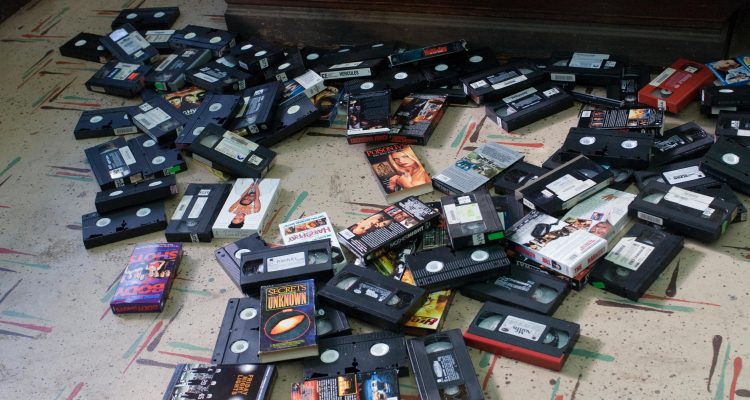There’ve been a few other things going on in the world of late, so it’s not surprising if you’ve been too busy groaning “Oh God, oh God” at the headlines to take in wacky little sidebar tech stories. But as at the end of this month, which is essentially the end of this week, the last VCR manufacturer in the world is going to cease production. Right now, somewhere in the bowels of Japan’s Funai Electric Company, the last sprockety thingie is being attached to the last spring-loaded whatsit in the last brand-new VHS cassette tape recording device that will ever roll off any production line.
READ MORE: The Best & The Rest: Every Steven Spielberg Film Ranked
It’s been a bad couple of years to be a videotape enthusiast (there are such peculiar souls, and I’m not even counting the new adherents who will respond to the spike in hipster cred that VCRs will undoubtedly undergo purely because of their rarity from now on). In 2015, Sony announced the cessation of production of Betamax tapes, which was a little like hearing about the death of a celebrity that your Mom had a crush on who you’d assumed had been dead for a long time already. They had stopped making the machines on which those tapes could be played all the way back in 2002, having lost the battle for the home market to VHS over a decade before that (a skirmish that lives on as the subject of a thousand business school case studies about how technological superiority means jackshit compared to price point and marketing). VHS certainly laughed last and longest compared to its more elegant, more expensive competitor, but now its time is clearly up.

“Eragon,” reportedly the last film ever to get a VHS release.
It does feel a little unfair, however that, seeing as we’re living in a culture of near-peak ’80s nostalgia, the end of VHS feels so unlamented. We’ll minutely catalogue all the references to Steven Spielberg, John Carpenter and Stephen King films in Netflix‘s hit “Stranger Things” (here’s Vulture‘s exhaustive print list, an even geekier take and our own post about the side-by-side supercut that swept the net), but we scarcely spare a thought for the passing of the format on which most of us first encountered all those movies? The humble videotape, after all, was a far more ubiquitous part of the ’80s landscape than more frequently touted reference points like the Rubik’s Cube or the Rick Astley songbook. It surely deserves at least a moment of quiet introspection.
Of course, it’s easy to see why the demise of video might be brushed aside in the annals of Great Cinema Endings. News of the termination of motion picture film camera manufacture inspired paroxysms of cinephile despair (here’s Matt Zoller Seitz’s Salon.com take on the death of that “ineffable beauty”), but video doesn’t have that quasi-mystical, emotive hold on our collective cinematic imagination. Videotape was only ever a secondary format — no “professional” theatrically-released narrative films were shot on it unless for a very specific reason (Pablo Larrain‘s “No” being a recent anomalous example). And if you think back now to the days of VCRs, video rental and taping stuff off the TV, you probably first think of all the annoyances: the be-kind-rewinding; the ridiculous complexity of the timer function; the arcane special-sauce mystery that was the Tracking knob. All that, coupled with the bulky unloveliness of the tapes themselves, in their eye-janglingly generic video-store covers, or emblazoned with labels-on-labels of crossed out, barely legible marker scrawls, could easily make the modern film fan bless themselves in relief that tape is gone and not coming back

Pablo Larrain’s “No”
In this age of Netflix queues and Instant Video and other content delivery systems that take up zero physical space in our homes, when even a neat shelf of DVDs or slender Blu-Rays is as much a curated lifestyle statement as a film buff’s necessity, analog formats feel borderline archaic: scratchy relics of a distant, cluttered, dust-gathering age. And that’s for those of us old enough to even recall using them, who are not simply trading (with a hat tip to LCD Soundsystem) in borrowed nostalgia for the unremembered ’80s. But perhaps the primary reason that as a community we feel no particular urge to solemnly observe the end of the epoch that videotape ushered in, is that the epoch isn’t over. We can’t fully see the forest that VHS seeded, because we’re still living amongst its trees.

